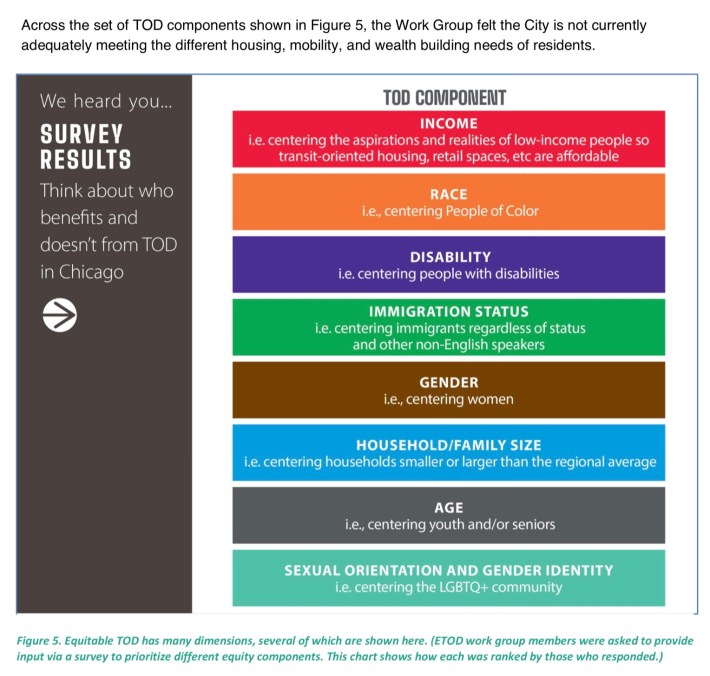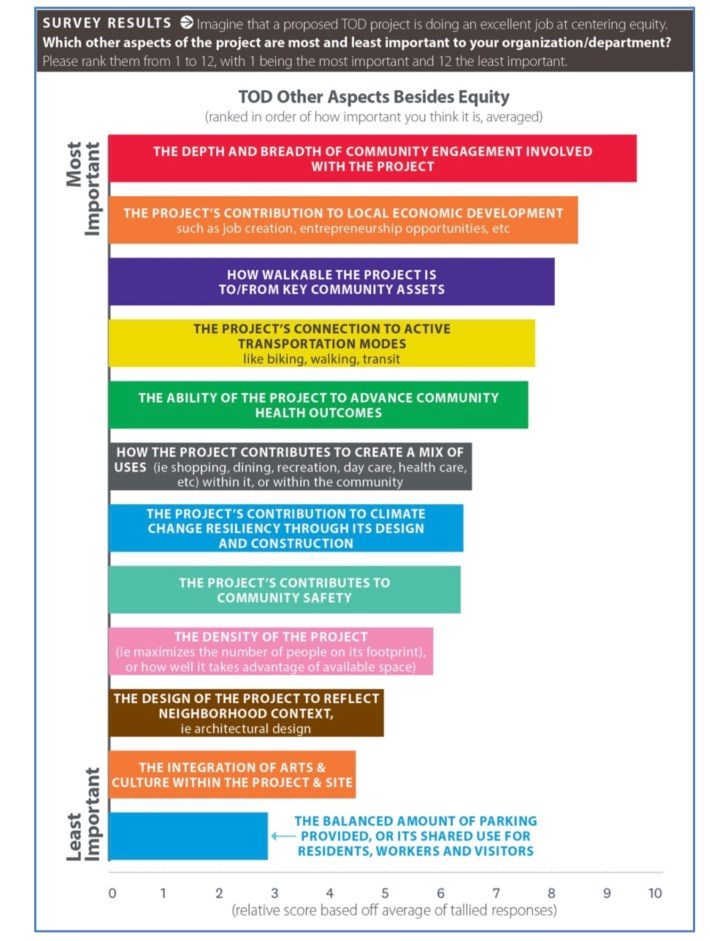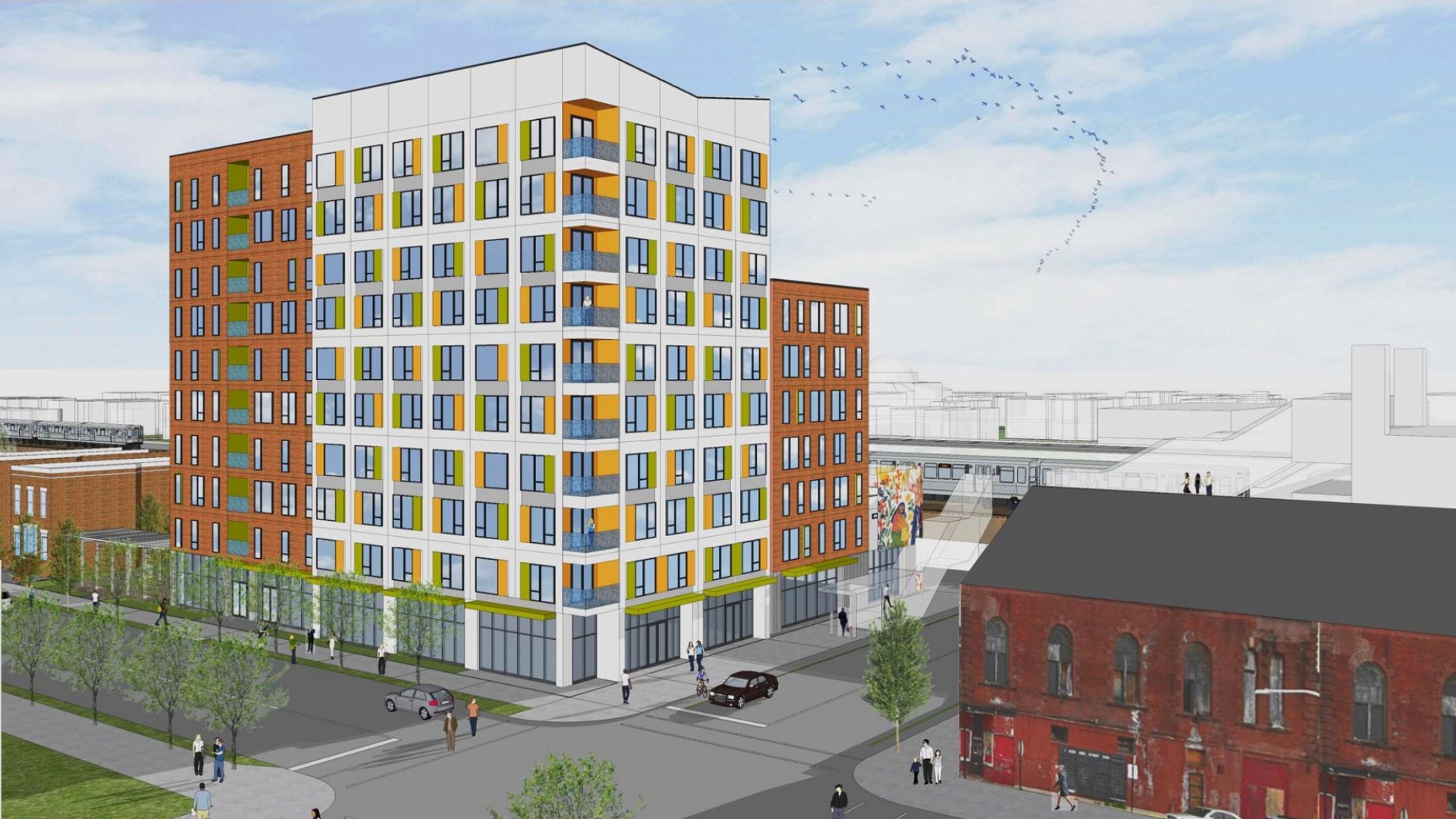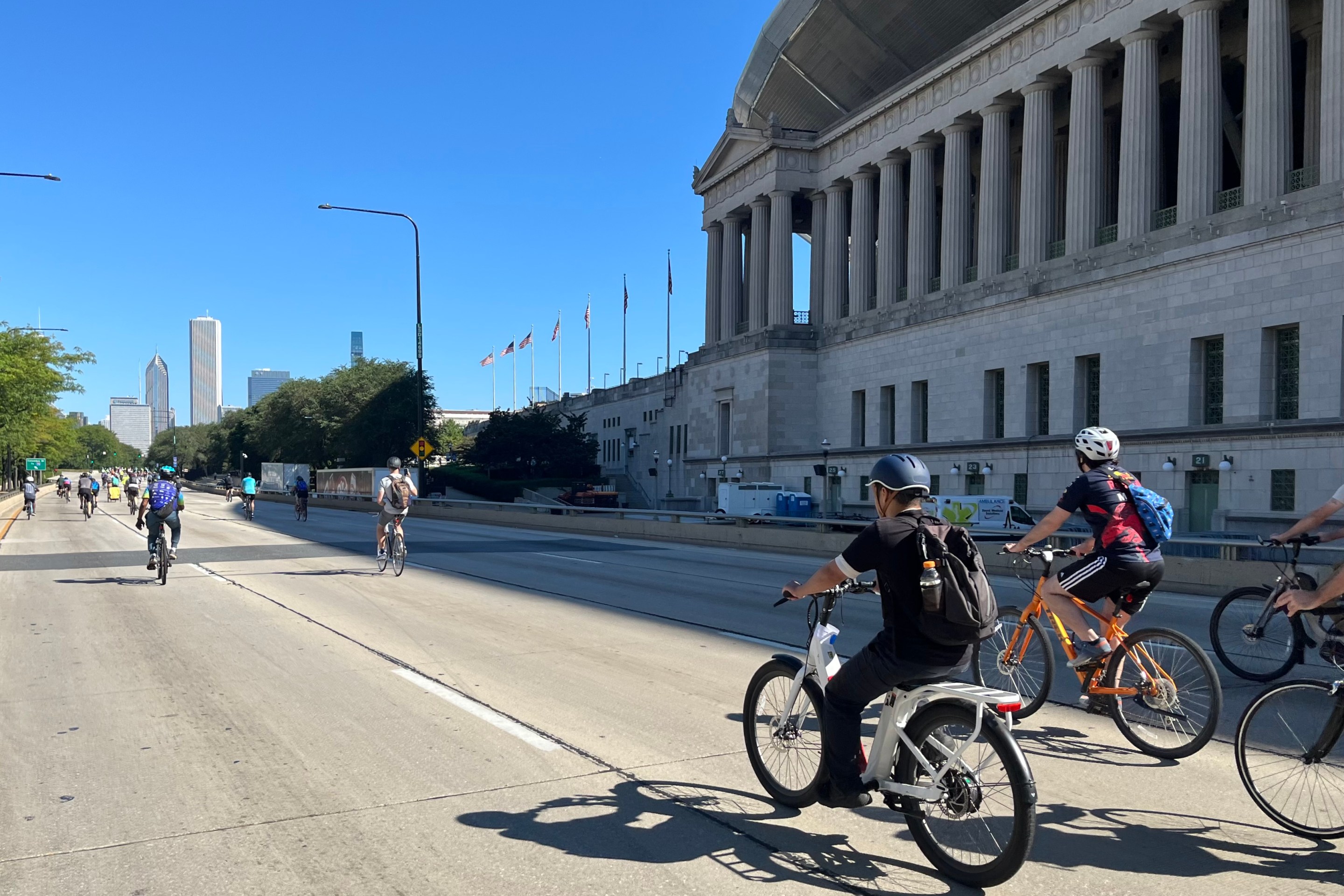The city of Chicago recently released its Equitable Transit Oriented Development Policy Plan. Transit-oriented development is high-density, parking-lite development near rapid and/or high-frequency train or bus service. The city defines eTOD as “development that enables all people, regardless of income, race, ethnicity, age, gender, immigration status or ability, to experience the benefits of dense, mixed-use, pedestrian-oriented development near transit hubs.”
The eTOD plan was mandated by the city’s 2019 amendment to the Chicago TOD ordinance, originally approved by the City Council in 2013, which required the city to study disparities in the TOD ordinance performance and propose updates to encourage more equitable development. The eTOD plan was developed in partnership with Elevated Chicago. An eTOD Work Group was created to engage over 70 stakeholders representing many city departments, community organizations, the private sector, philanthropic organizations, and regional nonprofit and governmental partners.
First, let’s look at the current state of affairs. An analysis of TOD developments approved between 2016 and 2019 revealed almost 90 percent of new projects took place on the North Side, Northwest Side, in the West Loop, or downtown. Where new TOD development is occurring, the white population has increased, the Black population has decreased, and the Latinx population has increased in some areas and decreased in others. These demographic shifts point to displacement patterns. In contrast, areas near rail stations that are eligible for TOD benefits but that have not seen TOD project activity have more residents of color, more low-income residents, and more residents with a high school diploma or less.
ETOD is both a process and a type of development that can help realize the vision of a city in which one’s health outcomes, potential to build wealth, or access to opportunity is not dependent upon one’s zip code or race.
The 2020 eTOD Policy Plan outlines a comprehensive set of actions for the city to take over the next three years. Recommendations are organized into three strategic priorities: Build the city’s capacity to support eTOD; Making eTOD required, easier, and more equitable; and embedding eTOD principles into Chicago’s citywide planning process. I’m going to share a few of the highlights from each priority area. Before doing so, however, I want to highlight the priorities of the work group that influenced the eTOD plan.

One of the three recommendation categories for the eTOD plan is to build the city's capacity to support eTOD. This will involve a commitment to cross-sector and inter-agency coordination, evaluation, accountability, and transparency. Highlights of this goal include:
- Hiring a dedicated full-time eTOD Manager to advance policy recommendations and coordinate eTOD projects and programs.
- Creating an eTOD evaluation framework and publish an annual performance report which can include setting goals and track metrics such as production and preservation of affordable housing; accessibility; public health and environmental impacts; and transportation and demographic characteristics of TOD residents.
- Developing a strategy to leverage publicly owned land and vacant lots near transit for public benefits.
- Standardizing community engagement requirements and practices related to development and planning projects across City departments.

The second strategic priority, Making eTOD required, easier, and more equitable, will involve taking steps to ensure all strategies to this end will facilitate development in historically disinvested neighborhoods while avoiding displacement in neighborhoods already seeing accelerated investment. Policy recommendations include:
- Applying a health and equity impact assessment to the development of eTOD-related policy.
- Allowing more flexibility in permitted building uses.
- Strengthening bike parking requirements for TOD projects.
- Establishing maximum allowed parking while also working to minimize burden on low-income drivers.
- Requiring parking to be paid or leased separately from housing in TOD projects.
- Allowing shared parking to meet parking requirements in TOD areas.
- Strengthening equity in procurement and supplier diversity policies to ensure small and minority owned firms benefit from new development.
- Improving visibility and accessibility of transit signage and wayfinding accessibility for people with disabilities or for whom English is not their first language.
- Preserving unsubsidized affordable housing within TOD zones, especially 2-4 flat buildings.
- Developing incentives and policies to preserve and retain community organizations, small businesses, and other neighborhood assets in TOD zones.
Chicago is in the beginning stages of its first citywide plan in decades. The eTOD plan comes at an opportune time to incorporate recommendations to advance eTOD in the Citywide Planning Process. To that end, the following recommendations fall under the Embed eTOD into Chicago’s Citywide Plan heading:
- Develop a process for the city and partners to conduct racial and health equity assessments on land use plans and zoning decisions.
- Establish a framework for neighborhood land use plans that adhere to the goals of equity, resiliency, and diversity and recognize the specific opportunities within TOD geographies.
- Prioritize investments in transit, biking, and walking in the Citywide plan.
I am happy to see the city starting to move towards spreading the benefits of transit-oriented development to more parts of the city and aiming towards an equitable implementation of it. The development of tools to measure the city’s progress and a way to publish the results of the analysis will be a crucial part of determining if we’re headed in the right direction.
During my first visit to Chicago as an adult in 2013, I very quickly saw the disparities in transit-oriented land use. I was happy to read about short-term implementation opportunities for the eTOD plan will be within the INVEST South/West initiative and the development of a comprehensive strategy to leverage publicly owned land and vacant lots near transit for public benefit. Time will tell how well Chicago will implement equitable transit-oriented development.
View the city's eTOD plan here. Residents can submit their comments to etod@cityofchicago.org through Thursday, October 29.
Follow Courtney Cobbs on Twitter at @CourtneyCyclez.






